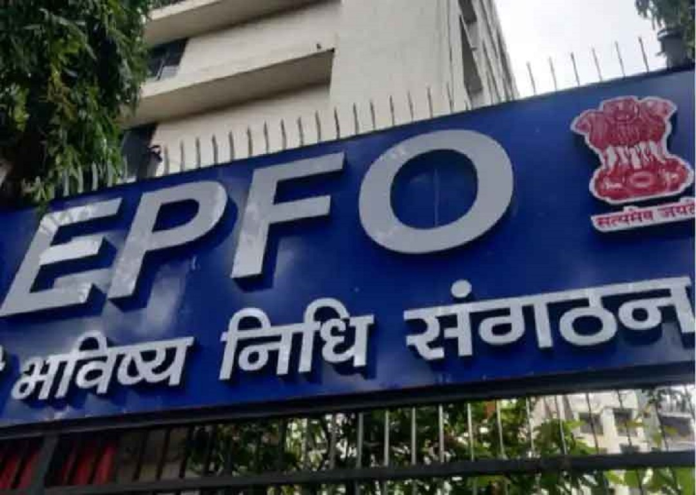EPFO New Guideline: Employees’ Provident Fund Organization (EPFO) has issued new guidelines on tax deduction for private sector employees who contribute more than 2.50 lakh to retirement savings accounts every year. . The EPFO said in a circular that the tax limit for EPF contribution for government employees would be Rs 5 lakh per annum.
This taxation scheme came into effect from 1st April this year. Employees in India are required to have an EPF account. As per the circular, TDS will be deducted on payment of interest in the EPF account. TDS will be deducted at a later date on final settlement pending for final settlement or transfer.
For those who have not integrated their PAN into their EPF accounts, contributions above Rs 2.5 lakh will be taxed at 20% from their annual income. Those who have linked their EPF accounts with their PAN will be taxed at the rate of 10%.
Other information about the new guidelines
- As per the circular, the EPFO will maintain a non-taxable account and a taxable account for all such members who contribute more than 2.5 lakhs.
- If the TDS calculated is less than 5,000, no TDS will be deducted from the interest deposited in such EPF accounts.
- For ex-pat and non-resident employees having EPF accounts active in India, tax will be levied at the rate of 30% as per the requirements of the Double Taxation Avoidance Agreement between India and the country concerned.
- TDS will also be applicable to all EPFO members, especially members of exempted establishments or exempted trusts.
- In case of death of EPFO member, TDS rate will remain unchanged.
The interest earned on the funds in EPF accounts is credited on an annual basis. However, the accounts are maintained on a monthly basis. Consequently, if no transfer or final settlement is made in the entire financial year, TDS will be deducted on payment of interest. EPFO now has 24.77 crore accounts of its members.
New rules are applicable on TDS for the residents of the same. TDS 4% Cess is applicable for Non Resident Indian. Apart from this, interest surcharge has been fixed at 10 percent for Indian non-resident above 50 to 1 crore, while there is a 15 percent surcharge on interest above one crore to 2 crore, while if its number is more than 10 crore, then the right on interest. 37% has been fixed. However, there will be no head charge on interest above ₹ 50 lakh.
Two UAN Merge
Many such cases have come to the fore in recent times. Where employees have been assigned multiple UANs. As per the rules, a person should have only one UAN in his entire lifetime. An employee’s EPF account is linked to his UAN. If two UANs have been given to an EPFO member, the old UAN should be deactivated.
Reasons for allotment of two UANs
When an employee changes his job, a new EPF account is opened by the new company. All EPF accounts are linked to UAN. Hence, there is a high probability that when the member employee changes his organization, he is allotted a new UAN. There can be many reasons for allotting a new UAN to a member. The most common reasons are listed below:
- Employee did not disclose his previous UAN – When an employee changes his job, he has to disclose his previous UAN and EPF account number (Member ID). If he does not provide these details, the new employer opens his new UAN and EPF account
- Non-submission of “Date of Exit” by the previous employer – Your previous employer has to mention the date of exit in the ECR (Electronic Invoice and Return). If this information is not given in time, the new establishment allots a new UAN to the employee.
What happens when you have 2 UANs?
It is against the rules to have two active UANs at the same time. A member should have only one UAN in which all his EPF accounts are linked. EPF accounts are non-transferrable in case of different employees. However, an employee having two UANs can transfer his EPF account from one to another and deactivate his previous UAN. Therefore, one EPF account linked to one UAN has to be mandatorily transferred to another EPF account linked to another UAN.
2 What should an employee do in case of allotment of UAN?
If you have been allotted two UANs, you can deactivate one of them (usually, the previous one). According to the EPFO website, there are two ways to deactivate UAN and transfer your EPF account. There are two methods below:
Process 1
As soon as you come to know about it, report the issue to your employer or EPFO. You can send an email to uanepf@epfindia.gov.in mentioning your current and previous UAN.
EPFO will verify the issue
- Your previous UAN will be blocked and your current UAN will be kept active
- Post this you need to submit claim to transfer EPF account to new active account
- This process takes a while and the resolution rate recorded is very low.
Thus, EPFO has come up with a new process wherein it will be easy for a member to merge his two UANs and transfer his EPF easily.
- The EPFO member has to make a request to transfer the EPF amount from the old UAN to the new UAN.
- Once the request for transfer of EPF is made, the EPFO system automatically identifies the duplicate UAN. This identification process takes place in intervals.
- After proper identification, the old UAN from which the EPF transfer has been processed,
- Will be deactivated by EPFO and the previous member ID of the employee will be linked to the new UAN.
- The status of inactivity is informed to the employee through an SMS.
- If the employee has not activated his new UAN, he will be requested to activate it to get the updated status of the account.
There may be instances where the employee receives PF dues from the previous employer. In such cases, arrears are received in the new PF account linked to the new UAN as you have two EPF accounts with different UANs. The system of EPFO will recognize the same automatically. This identification happens from time to time. So, as soon as you come to know about it. You should apply to transfer the old EPF to the new one. The system auto-populates the new UAN number in the ECR.














